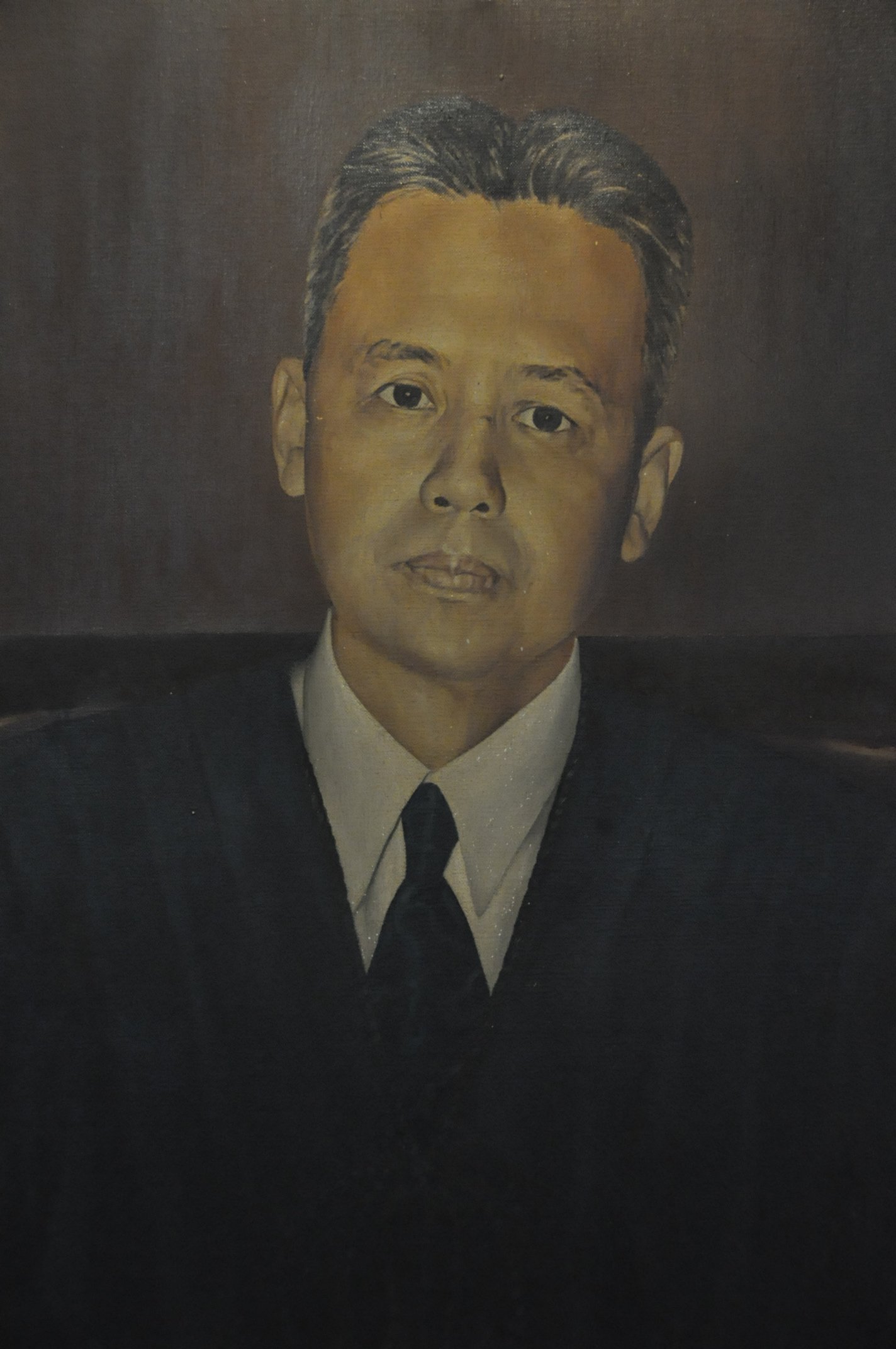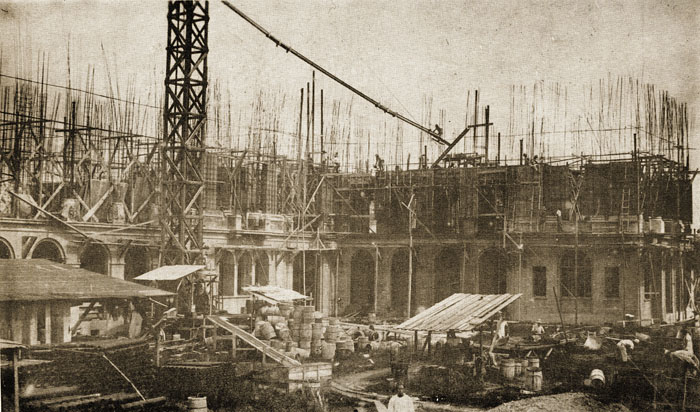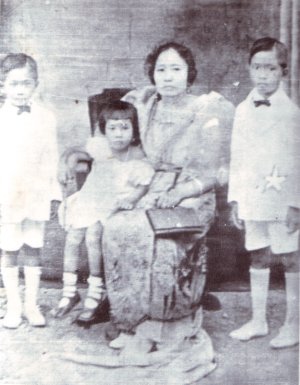|
Tanggol Wika
Tanggol Wika or Alyansa ng Mga Tagapagtanggol ng Wikang Filipino (Alliance of Defenders of the Filipino Language) is a Philippine-based organization founded in 2014 in an assembly of more than 300 professors, students, writers and cultural activists at the De La Salle University-Manila, as a response to the abolition of formerly mandatory Filipino language subjects in Philippine colleges and universities because of Commission on Higher Education (CHED) Memorandum Order No. 20, Series of 2013, which implements a new General Education Curriculum (GEC) as part and parcel of the Philippine government's adoption of the Kindergarten to 12 years of basic education or K to 12 program. In its founding manifesto, Tanggol Wika listed the following objectives as its main advocacies: 1) Retain the teaching of Filipino language subjects in the new Philippine General Education Curriculum (GEC) in college; 2) Revise Commission on Higher Education (CHED) Memorandum Order 20. series of 2013; and 3) ... [...More Info...] [...Related Items...] OR: [Wikipedia] [Google] [Baidu] |
Philippine Supreme Court
The Supreme Court ( fil, Kataas-taasang Hukuman; colloquially referred to as the ''Korte Suprema'' lso used in formal writing is the highest court in the Philippines. The Supreme Court was established by the Second Philippine Commission on June 11, 1901 through the enactment of its Act No. 136, an Act which abolished the '' Real Audiencia de Manila'', the predecessor of the Supreme Court. The Supreme Court compound, which sits in what is formerly a part of the University of the Philippines Manila campus, occupies the corner of Padre Faura Street and Taft Avenue in Ermita, Manila, with the main building directly in front of the Philippine General Hospital’s cancer institute. History Pre-hispanic period Prior to the conquest of Spain, the islands of the Philippines were composed of independent barangays, each of which is community composed of 30 to 100 families. Typically, a barangay is headed by a ''datu'' or a local chief who exercises all functions of government—executiv ... [...More Info...] [...Related Items...] OR: [Wikipedia] [Google] [Baidu] |
Filipino Language
Filipino (; , ) is an Austronesian language. It is the national language ( / ) of the Philippines, and one of the two official languages of the country, with English. It is a standardized variety of Tagalog based on the native dialect, spoken and written, in Metro Manila, the National Capital Region, and in other urban centers of the archipelago. The 1987 Constitution mandates that Filipino be further enriched and developed by the other languages of the Philippines. Filipino is only used as a tertiary language in the Philippine public sphere. Filipino, like other Austronesian languages, commonly uses verb-subject-object order, but can also use subject-verb-object order as well. Filipino follows the trigger system of morphosyntactic alignment that is also common among Austronesian languages. It has head-initial directionality. It is an agglutinative language but can also display inflection. It is not a tonal language and can be considered a pitch-accent language a ... [...More Info...] [...Related Items...] OR: [Wikipedia] [Google] [Baidu] |
De La Salle University
De La Salle University ( fil, Pamantasang De La Salle or Unibersidad ng De La Salle), also referred to as DLSU, De La Salle or La Salle, is a private, Catholic coeducational research university run by the Institute of the Brothers of the Christian Schools in Taft Avenue, Malate, Manila, Philippines. It was established by the Christian Brothers in 1911 as the De La Salle College (DLSC) in Nozaleda Street, Paco, Manila with Blimond Pierre Eilenbecker, FSC serving as director, and is the first De La Salle school in the Philippines. The institution moved to its present location in 1921. The college was granted university status on February 19, 1975, and is the oldest constituent of De La Salle Philippines (DLSP), a network of 16 educational institutions, established in 2006 replacing the De La Salle University System. The institution started as an exclusive all-boys elementary and high school. In 1920, it began offering a two-year Associate in Arts Commerce program, which was lat ... [...More Info...] [...Related Items...] OR: [Wikipedia] [Google] [Baidu] |
Commission On Higher Education (Philippines)
The Commission on Higher Education (CHED; fil, Komisyon sa Mas Mataas na Edukasyon Komisyon sa Lalong Mataas na Edukasyon) is a Philippine government agency attached to the Office of the President of the Philippines for administrative purposes. It covers both public and private higher education institutions as well as degree-granting programs in all post-secondary educational institutions in the country. History The CHED was established on May 18, 1994 through Republic Act No. 7722 or the Higher Education Act of 1994 which was authored by Senator Francisco Tatad. The creation of CHED was part of a broad agenda for reforms in the country's education system, outlined by the Congressional Commission on Education (EDCOM) in 1992. Part of the reforms is the trifocalization of the education sector. The three governing bodies in the education sector are the Commission on Higher Education (CHED) for tertiary and graduate education, the Department of Education (DepEd) for basic e ... [...More Info...] [...Related Items...] OR: [Wikipedia] [Google] [Baidu] |
Supreme Court Of The Philippines
The Supreme Court ( fil, Kataas-taasang Hukuman; colloquially referred to as the ''Korte Suprema'' lso used in formal writing is the highest court in the Philippines. The Supreme Court was established by the Second Philippine Commission on June 11, 1901 through the enactment of its Act No. 136, an Act which abolished the '' Real Audiencia de Manila'', the predecessor of the Supreme Court. The Supreme Court compound, which sits in what is formerly a part of the University of the Philippines Manila campus, occupies the corner of Padre Faura Street and Taft Avenue in Ermita, Manila, with the main building directly in front of the Philippine General Hospital’s cancer institute. History Pre-hispanic period Prior to the conquest of Spain, the islands of the Philippines were composed of independent barangays, each of which is community composed of 30 to 100 families. Typically, a barangay is headed by a ''datu'' or a local chief who exercises all functions of government—ex ... [...More Info...] [...Related Items...] OR: [Wikipedia] [Google] [Baidu] |
1987 Philippine Constitution
The Constitution of the Philippines (Filipino: ''Saligang Batas ng Pilipinas'' or ''Konstitusyon ng Pilipinas'', Spanish: ''Constitución de la República de Filipinas'') is the constitution or the supreme law of the Republic of the Philippines. Its final draft was completed by the Constitutional Commission on October 12, 1986, and ratified by a nationwide plebiscite on February 2, 1987. Three other constitutions have effectively governed the country in its history: the 1935 Commonwealth Constitution, the 1973 Constitution, and the 1986 Freedom Constitution. The earliest constitution establishing a "Philippine Republic", the 1899 Malolos Constitution, was never fully implemented throughout the Philippines and did not establish a state that was internationally recognized, due in great part to the eruption of the Philippine–American War. Background of the 1987 Constitution Ruling by decree during the early months of her tenure as a president installed via the People Power ... [...More Info...] [...Related Items...] OR: [Wikipedia] [Google] [Baidu] |
Mendiola Street
Mendiola Street (simply known as "Mendiola") is a short thoroughfare in Manila, Philippines. The street is named after Enrique Mendiola, an educator, textbook author, and member of the first Board of Regents of the University of the Philippines. As a street close to Malacañang Palace, the President of the Philippines' official residence, it has been the site of numerous and sometimes bloody demonstrations. On the north end of the street is the Don Chino Roces Bridge, named in honor of Chino Roces, a well-known figure during the Philippines' Martial Law years. (An illuminated street sign above the intersection of Recto and Mendiola erroneously refers to the latter street as Chino Roces Avenue). Mendiola Street starts at the intersection of Legarda Street and Claro M. Recto Avenue and ends at Jose Laurel Street, just outside Malacañang Palace. Four colleges and universities which form a part of the University Belt are on Mendiola Street. To protect Malacañang Pala ... [...More Info...] [...Related Items...] OR: [Wikipedia] [Google] [Baidu] |
Malacañang Palace
Malacañang Palace ( fil, Palasyo ng Malakanyang, ; es, Palacio de Malacañán), officially known as Malacañan Palace, is the official residence and principal workplace of the president of the Philippines. It is located in the Manila district of San Miguel, and is commonly associated with Mendiola Street. The term ''Malacañang'' is often used as a metonym for the president, their advisers, and the Office of the President of the Philippines. The sprawling Malacañang Palace complex includes numerous mansions and office buildings designed and built largely in the bahay na bato and neoclassical styles. Among the presidents of the present Fifth Republic, only Gloria Macapagal Arroyo actually lived in the main palace as both her office and her residence, with all others residing in nearby properties that form part of the larger palace complex. [...More Info...] [...Related Items...] OR: [Wikipedia] [Google] [Baidu] |
Elections In The Philippines
Elections in the Philippines are of several types. The president, vice-president, and the senators are elected for a six-year term, while the members of the House of Representatives, governors, vice-governors, members of the Sangguniang Panlalawigan (provincial board members), mayors, vice-mayors, members of the Sangguniang Panlungsod/ members of the Sangguniang Bayan (city/municipal councilors), barangay officials, and the members of the Sangguniang Kabataan (youth councilors) are elected to serve for a three-year term. Congress has two chambers. The House of Representatives has 316 seats since 2022, of which 80% are contested in single seat electoral districts and 20% are allotted to party-lists according to a modified Hare quota with remainders disregarded and a three-seat cap. These party list seats are only accessible to marginalized and under-represented groups and parties, local parties, and sectoral wings of major parties that represent the marginalized. The ... [...More Info...] [...Related Items...] OR: [Wikipedia] [Google] [Baidu] |
Bongbong Marcos
Ferdinand "Bongbong" Romualdez Marcos Jr. ( , , ; born September 13, 1957), commonly referred to by the initials PBBM or BBM, is a Filipino politician who is the 17th and current president of the Philippines. He previously served as a senator from 2010 to 2016. He is the second child and only son of tenth president Ferdinand Marcos Sr. and former first lady Imelda Romualdez Marcos. In 1980, Marcos became Vice Governor of Ilocos Norte, running unopposed with the Kilusang Bagong Lipunan party of his father, who was ruling the Philippines under martial law at the time. He then became Governor of Ilocos Norte in 1983, holding that office until his family was ousted from power by the People Power Revolution and fled into exile in Hawaii in February 1986. After the death of his father in 1989, President Corazon Aquino eventually allowed his family to return to the Philippines to face various charges. Marcos and his mother, Imelda, are currently facing arrest in the United St ... [...More Info...] [...Related Items...] OR: [Wikipedia] [Google] [Baidu] |
Ferdinand Marcos
Ferdinand Emmanuel Edralin Marcos Sr. ( , , ; September 11, 1917 – September 28, 1989) was a Filipino politician, lawyer, dictator, and kleptocrat who was the 10th president of the Philippines from 1965 to 1986. He ruled under martial law from 1972 until 1981 p. 189. and kept most of his martial law powers until he was deposed in 1986, branding his rule as " constitutional authoritarianism" under his Kilusang Bagong Lipunan (New Society Movement). One of the most controversial leaders of the 20th century, Marcos's rule was infamous for its corruption, extravagance, and brutality. Marcos gained political success by claiming to have been the "most decorated war hero in the Philippines", but many of his claims have been found to be false, with United States Army documents describing his wartime claims as "fraudulent" and "absurd". After World War II, he became a lawyer then served in the Philippine House of Representatives from 1949 to 1959 and the Philippine Senate ... [...More Info...] [...Related Items...] OR: [Wikipedia] [Google] [Baidu] |
Marcos Dictatorship
At 7:17 pm on September 23, 1972, President Ferdinand Marcos announced on television that he had placed the entirety of the Philippines under martial law. This marked the beginning of a 14-year period of one-man rule that would effectively last until Marcos was exiled from the country on February 25, 1986. Even though the formal document proclaiming martial law – Proclamation No. 1081, which was dated September 21, 1972 – was formally lifted on January 17, 1981, Marcos retained essentially all of his powers as dictator until he was ousted. While the period of Philippine history in which Marcos was in power actually began seven years earlier, when he was first inaugurated president of the Philippines in late 1965, this article deals specifically with the period where he exercised dictatorial powers under martial law, and the period in which he continued to wield those powers despite technically lifting the proclamation of martial law in 1981. When he declared martial law in ... [...More Info...] [...Related Items...] OR: [Wikipedia] [Google] [Baidu] |







